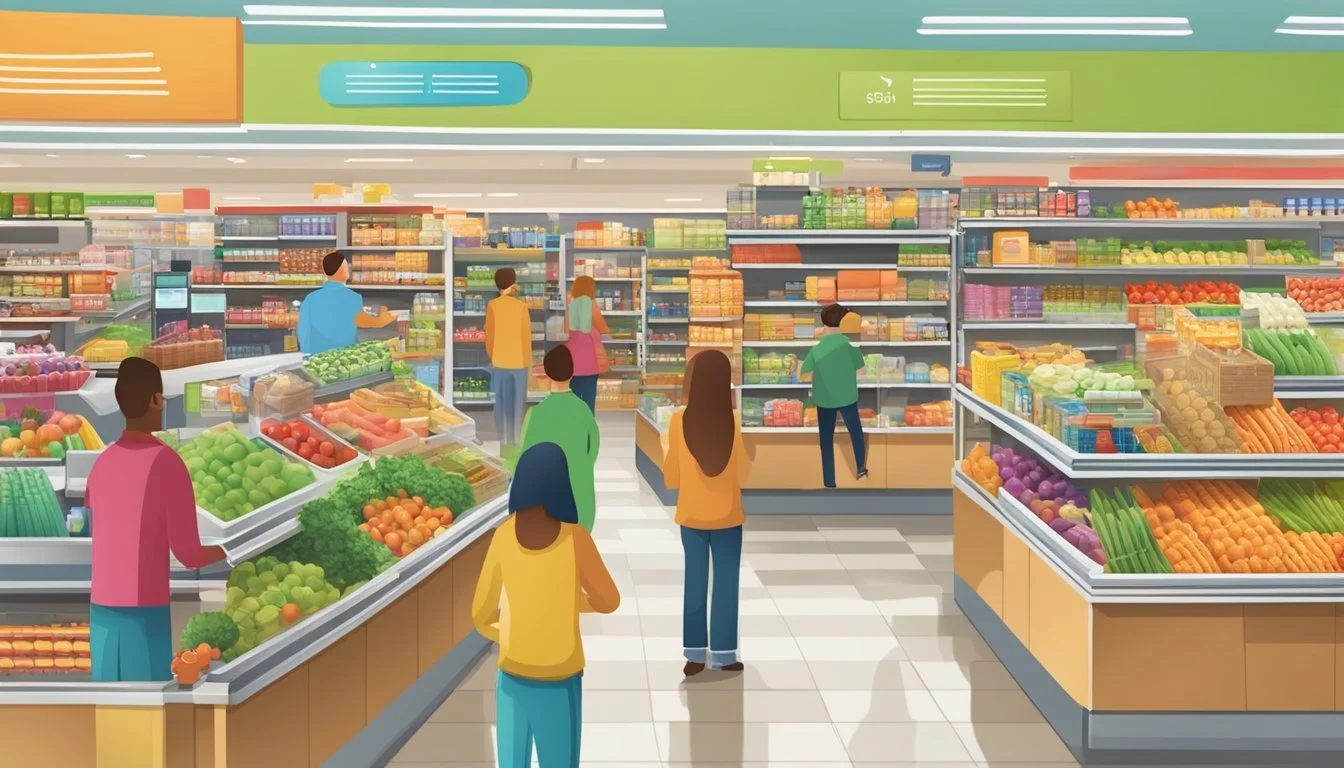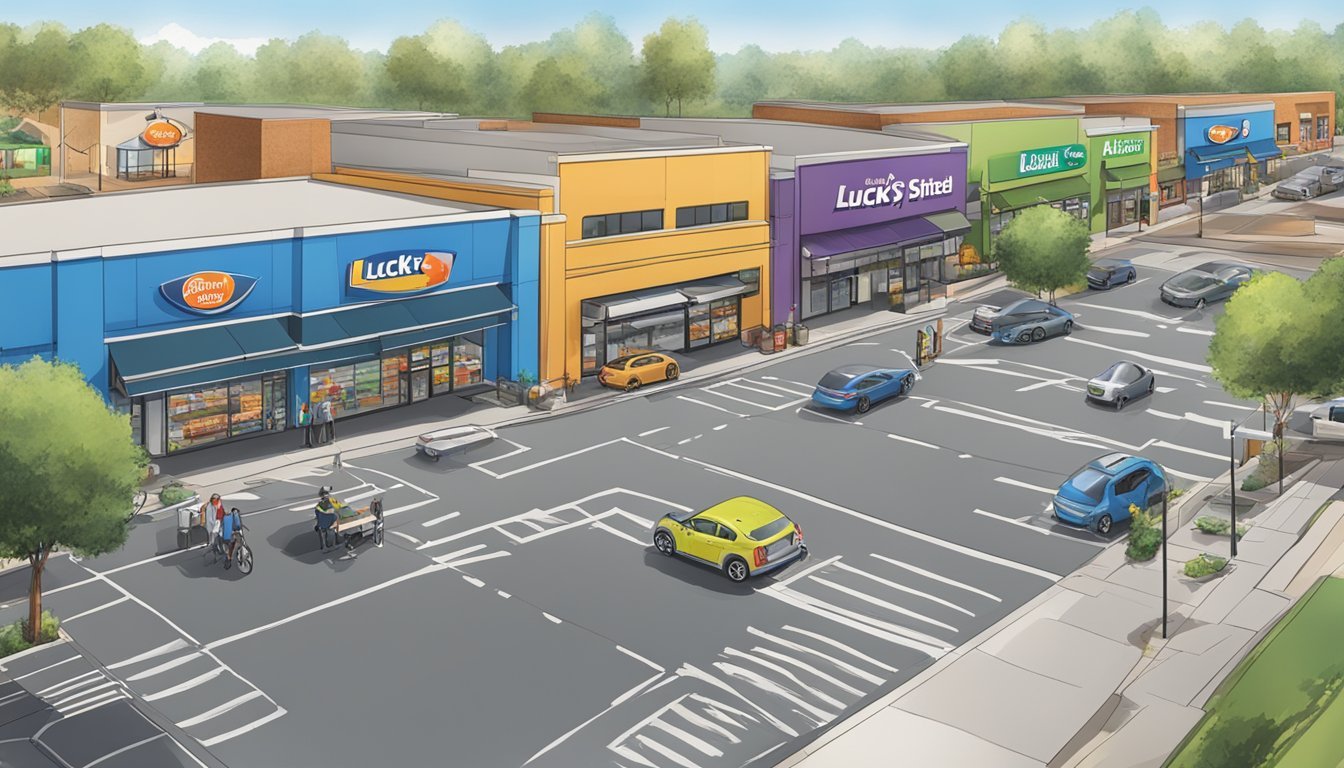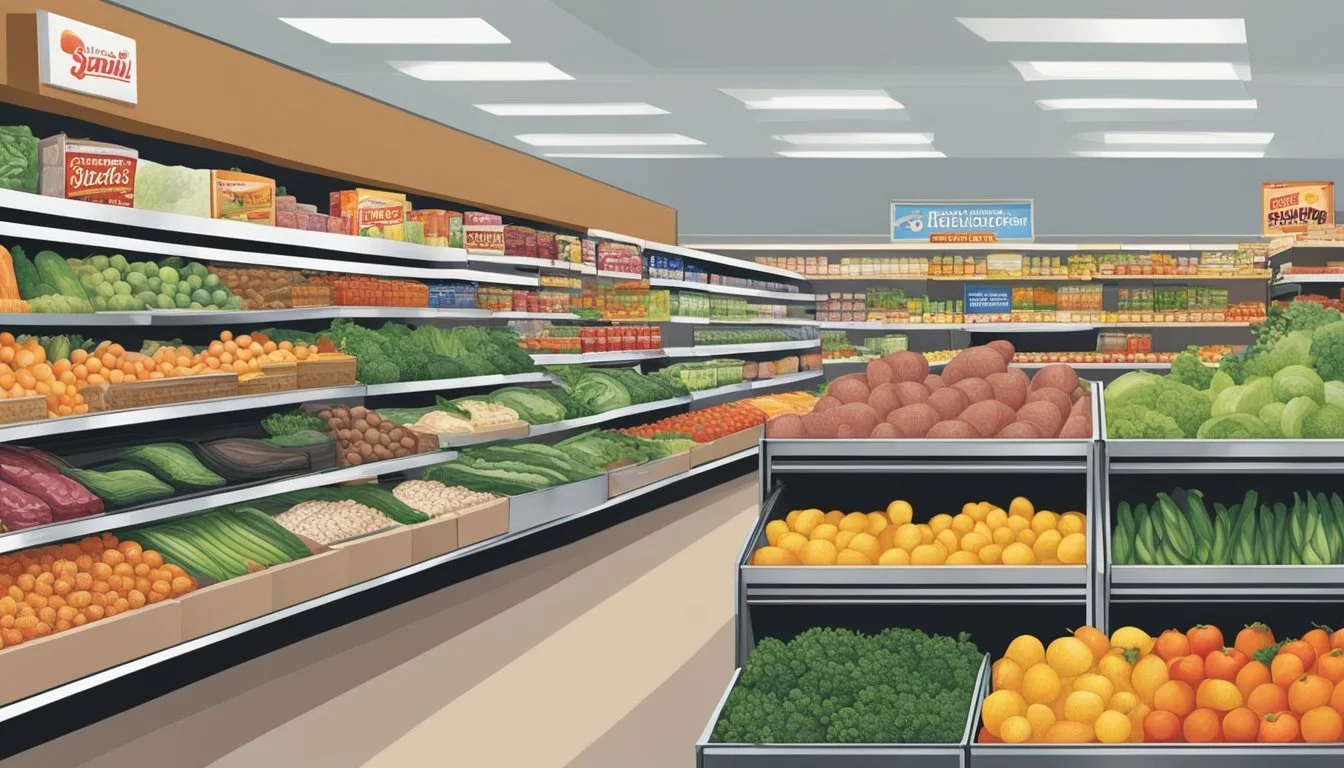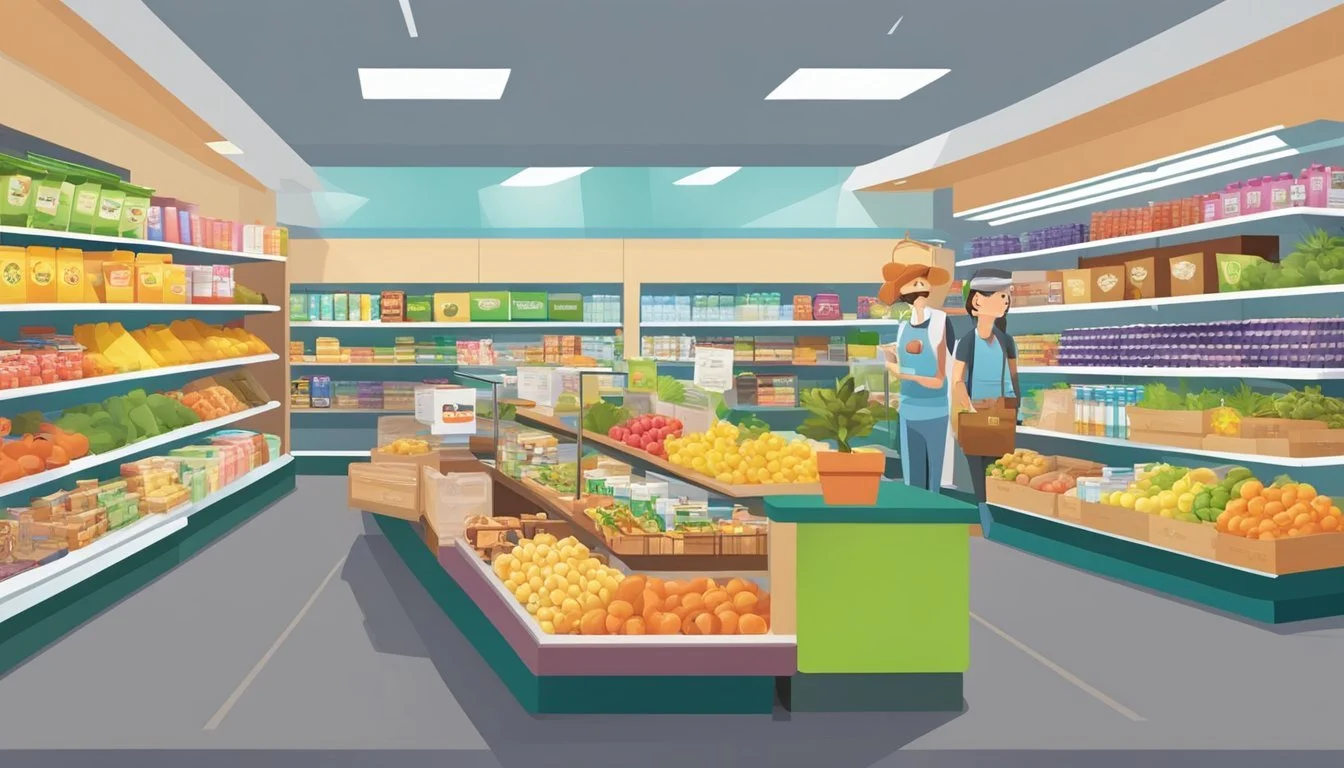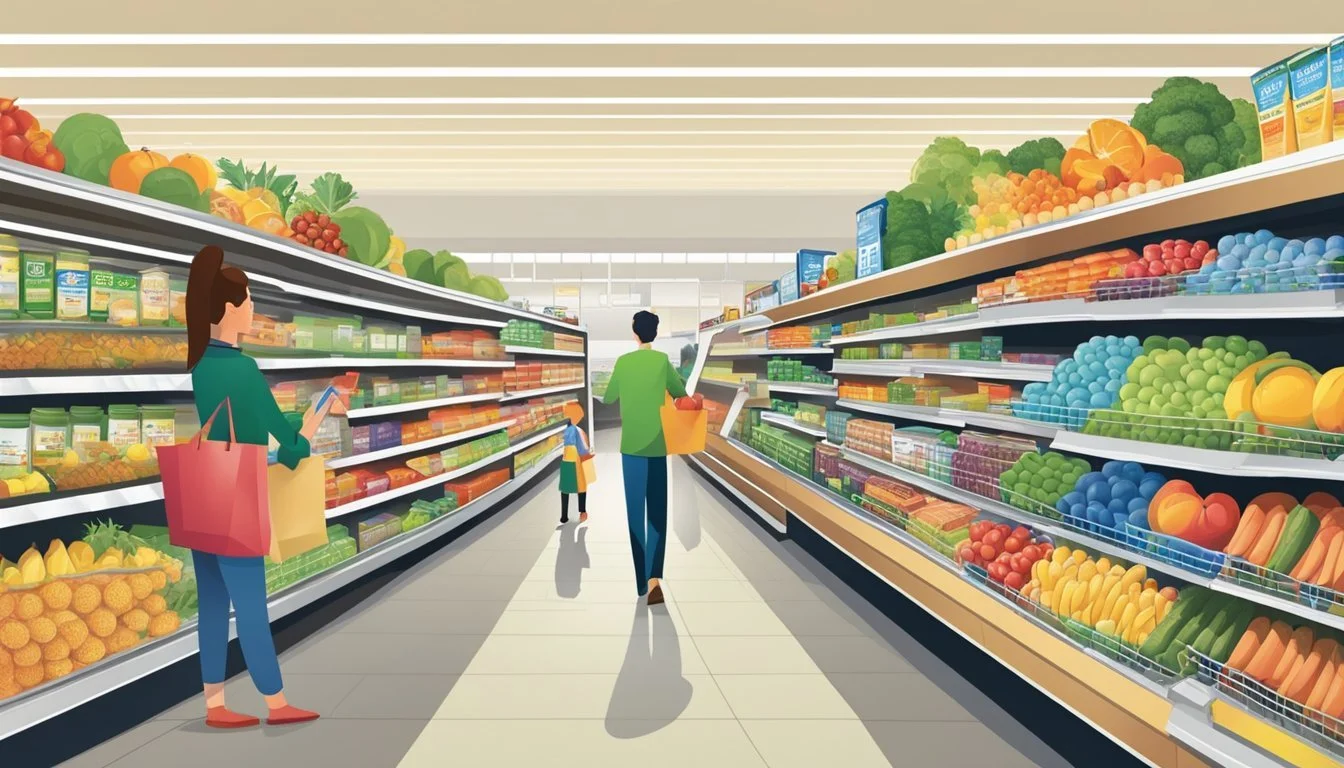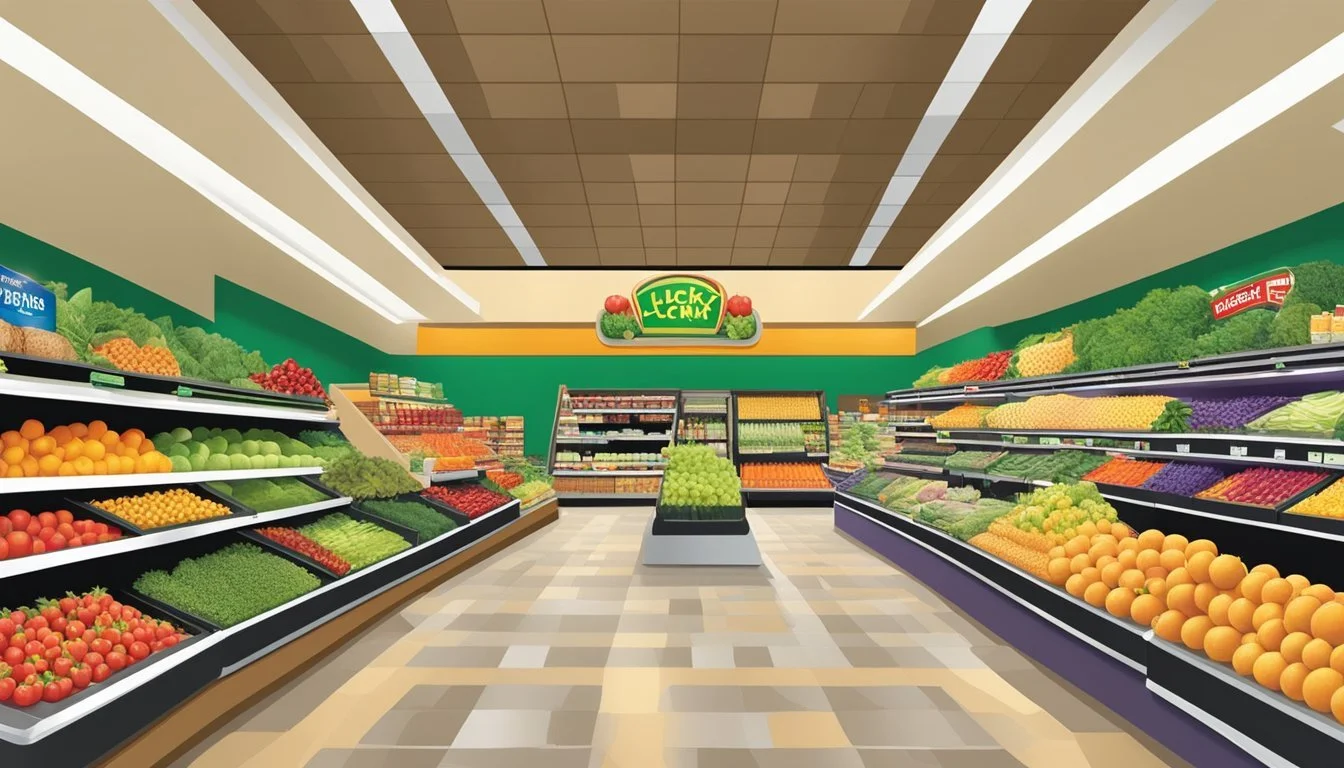Lucky Supermarkets vs Smart & Final
Comparing Prices, Selection, and Quality
Lucky Supermarkets and Smart & Final are two popular grocery chains competing for customers in various regions. Both stores offer a range of products to meet shoppers' needs, but they differ in several key aspects.
Smart & Final generally offers lower prices compared to Lucky Supermarkets, with some items priced up to 14% below average grocery store costs. This price difference can result in significant savings for regular shoppers. However, pricing is just one factor to consider when choosing between these two stores.
Product selection, store atmosphere, and location convenience are additional criteria that shoppers often weigh when deciding where to buy their groceries. Lucky Supermarkets may appeal to those seeking a traditional supermarket experience, while Smart & Final caters to both household and business customers with its bulk offerings and no-frills approach.
Company Overviews
Lucky Supermarkets and Smart & Final have unique histories that have shaped their current positions in the grocery industry. Both companies have evolved over time to meet changing consumer needs and market conditions.
History of Lucky Supermarkets
Lucky Supermarkets traces its roots back to 1935 when Charles Crouch opened the first store in San Leandro, California. The chain expanded rapidly throughout Northern California in the 1940s and 1950s.
Lucky pioneered the concept of the "supermarket" format, offering a wide variety of products under one roof. This innovation set it apart from traditional grocery stores of the time.
In 1998, Lucky was acquired by Albertsons but continued to operate under its own brand. The Lucky name disappeared briefly when Albertsons rebranded the stores, but it was revived in 2006 under new ownership.
Today, Lucky Supermarkets operates over 70 stores in Northern California and Nevada. The chain focuses on providing fresh produce, quality meats, and competitive prices to its customers.
History of Smart & Final
Smart & Final's history dates back to 1871 when Herman Hellman, Jacob Haas, and Bernard Cohn opened Hellman-Haas Grocery in Los Angeles. The company adopted its current name in 1914 after J.S. Smart and H.D. Final acquired the business.
Initially catering to restaurants and other businesses, Smart & Final expanded its customer base to include household shoppers. This dual focus on commercial and retail customers remains a key feature of the company today.
In the 1980s and 1990s, Smart & Final experienced significant growth, expanding beyond California into other states and internationally. The company went public in 2014 but was later acquired by private equity firm Apollo Global Management in 2019.
Smart & Final now operates over 250 stores across the western United States, offering a unique blend of bulk items, foodservice products, and household groceries.
Store Locations and Accessibility
Lucky Supermarkets and Smart & Final have different store location strategies to serve area consumers. Their accessibility varies depending on the region and target market.
Lucky Supermarkets Locations
Lucky Supermarkets primarily operates in Northern California. The chain focuses on serving local communities with conveniently located stores. Lucky has a strong presence in urban and suburban areas, making it easily accessible for many families.
Customers can find Lucky Supermarkets in cities like San Francisco, San Jose, and Sacramento. The company provides a store locator tool on its website to help shoppers find the nearest location.
Lucky Supermarkets typically offers ample parking and is often situated in shopping centers or standalone buildings. This setup allows for easy access and quick shopping trips.
Smart & Final Locations
Smart & Final has a wider geographic reach compared to Lucky Supermarkets. The chain operates stores across the Western United States, including California, Nevada, and Arizona.
Smart & Final locations are often found in both urban and suburban areas. The company strategically places its stores to cater to both individual consumers and small businesses.
Many Smart & Final stores are located in shopping plazas or near major intersections. This positioning makes them convenient for families and area consumers to access during their regular errands or commutes.
Smart & Final's website features a store locator tool, helping customers find nearby locations and view store hours. The chain's broader distribution allows it to serve a diverse range of communities and regions.
Product Range and Quality
Lucky Supermarkets and Smart & Final offer distinct product ranges to cater to different customer needs. Each store has its own strengths in terms of selection and quality.
Lucky Supermarket Offerings
Lucky Supermarkets focus on providing a traditional grocery store experience. They offer a wide variety of fresh produce, including organic options. Their meat department features high-quality cuts and a selection of poultry and seafood.
Lucky's deli counter provides freshly sliced meats and cheeses, along with prepared foods for quick meals. The store stocks a range of national and local brands across various categories.
Lucky emphasizes quality in its fresh departments, particularly in produce and meats. They often source locally when possible, supporting regional farmers and producers.
Smart & Final Offerings
Smart & Final combines elements of a warehouse store with a traditional supermarket. They offer bulk quantities of many items, appealing to both households and small businesses.
Their produce section, while smaller than Lucky's, still provides fresh fruits and vegetables at competitive prices. Smart & Final's meat department focuses on value packs and larger quantities.
The store carries a mix of name brands and their own First Street label across food categories. Smart & Final excels in providing restaurant-quality ingredients and supplies for home cooks and small-scale food service operations.
Their frozen food section is extensive, offering convenience for busy households and businesses alike. While the emphasis is on quantity and value, Smart & Final maintains consistent quality across their product range.
Pricing and Value for Money
Lucky Supermarkets and Smart & Final offer distinct pricing strategies and value propositions. Their approaches to discounts, overall cost, and pricing competitiveness impact shoppers' grocery budgets differently.
Price Comparison
Lucky Supermarkets typically maintains mid-range prices on common grocery items. Their pricing often falls between discount chains and premium stores.
Smart & Final, on the other hand, positions itself as a lower-cost option. The store's prices are generally 14% below the average of other supermarkets in the area.
For staple items like milk, eggs, and bread, Smart & Final tends to offer lower prices. A gallon of milk at Smart & Final costs around $3.79, which is competitive in most markets.
Discounts and Savings Programs
Lucky Supermarkets offers a loyalty program that provides personalized deals and digital coupons. Members can save on select items each week through the store's app or website.
Smart & Final focuses on bulk savings and club-size packaging. Their "Smart Savings" program offers additional discounts on featured products.
Both stores run weekly specials, but Smart & Final often has more aggressive promotions on bulk purchases. This can lead to significant savings for families or those buying in larger quantities.
Evaluating Overall Cost
When evaluating overall cost, it's important to consider typical shopping habits. Families who buy in bulk may find better value at Smart & Final due to its focus on larger package sizes and club packs.
Lucky Supermarkets can be cost-effective for shoppers who take advantage of their loyalty program and weekly deals. Their wider selection of national brands may also appeal to some consumers.
For a family spending $250 weekly on groceries, the potential 14% savings at Smart & Final could amount to $35 per week or over $1,800 annually.
Ultimately, the best value depends on individual shopping needs, brand preferences, and the ability to store bulk items. Comparing prices on frequently purchased items at both stores can help determine which offers better overall value for specific households.
Store Experience and Customer Service
Lucky Supermarkets and Smart & Final offer distinct shopping environments and customer support options. These factors significantly impact the overall grocery shopping experience for customers.
Shopping Ambiance
Lucky Supermarkets provides a traditional supermarket atmosphere with wide aisles and clearly labeled departments. The stores are generally clean and well-organized, making it easy for shoppers to navigate.
Smart & Final, on the other hand, offers a warehouse-style layout with bulk items alongside individual products. This unique setup can appeal to both small business owners and families looking to stock up.
Both chains prioritize cleanliness, but Lucky Supermarkets tends to have a more polished appearance. Smart & Final's industrial look may feel less inviting to some shoppers.
Customer Support Services
Lucky Supermarkets emphasizes personalized service, with staff often available to assist customers in finding products or answering questions. They typically offer bagging services and carry-out assistance for larger purchases.
Smart & Final focuses on efficiency, with self-checkout options and minimal staff interaction. This approach can be beneficial for customers who prefer a quick, no-frills shopping experience.
Both stores provide customer service desks for returns and inquiries. Lucky Supermarkets may have an edge in customer satisfaction due to their more hands-on approach to service.
Prepared food options vary between the chains. Lucky Supermarkets often feature in-store delis and bakeries, while Smart & Final typically offers a more limited selection of ready-to-eat items.
Consumer Perception and Ratings
Consumer perception and ratings provide valuable insights into the shopping experience at Lucky Supermarkets and Smart & Final. Public surveys, consumer reports, and online reviews offer a comprehensive view of customer satisfaction and store performance.
Public Surveys and Consumer Reports
Consumer Reports conducted a survey of 75,065 members to evaluate grocery stores and supermarkets. While specific ratings for Lucky Supermarkets were not provided in the search results, Smart & Final was included in the evaluation. The survey assessed factors such as overall quality, pricing, and customer experience. Smart & Final's performance in these areas helps shoppers understand its strengths and weaknesses compared to other grocery chains.
Online Reviews and Testimonials
Customer reviews on various platforms offer insights into the shopping experience at both Lucky Supermarkets and Smart & Final. These testimonials cover aspects like product selection, pricing, and customer service. Smart & Final received recognition for its competitive pricing, with one source indicating prices 14% lower than the average supermarket. This price advantage can be significant for budget-conscious shoppers.
Customers often share their experiences with store cleanliness, staff friendliness, and product quality through online reviews. These firsthand accounts help potential shoppers gauge the overall atmosphere and reliability of both Lucky Supermarkets and Smart & Final.
Special Features and Services
Lucky Supermarkets and Smart & Final offer unique perks to attract and retain customers. Both chains have implemented innovative services to enhance the shopping experience.
Exclusive Deals and Partnerships
Lucky Supermarkets provides a rewards program for frequent shoppers. Members earn points on purchases and receive personalized discounts.
Smart & Final partners with various brands to offer exclusive in-store promotions. These deals are often tailored to bulk buyers and small business owners.
Both stores have digital coupons available through their mobile apps. This feature allows customers to save money without the hassle of paper coupons.
Grocery Delivery and Convenience Services
Lucky Supermarkets collaborates with Instacart for home delivery services. Customers can order groceries online and have them delivered to their doorstep.
Smart & Final offers its own delivery service in select areas. The chain also provides a "Click & Carry" option for quick in-store pickup of online orders.
Both supermarkets have expanded their self-checkout options. This service reduces wait times and enhances convenience for shoppers in a hurry.
Smart & Final caters to business customers with dedicated checkout lanes and bulk packaging options. This feature sets it apart from traditional grocery stores.
Conclusion
Lucky Supermarkets and Smart & Final offer distinct shopping experiences for consumers. Both grocery stores have their strengths and appeal to different customer needs.
Lucky Supermarkets provides a traditional supermarket environment with a wide selection of fresh produce, meats, and brand-name products. They focus on quality and customer service.
Smart & Final caters to both households and businesses with bulk items and restaurant supplies. Their prices are often competitive, especially for larger quantities.
For everyday grocery needs, Lucky Supermarkets may be more suitable for families seeking variety and familiarity. Smart & Final excels for those buying in bulk or needing specialty food service items.
Price-conscious shoppers might find better deals at Smart & Final, particularly on larger package sizes. Lucky Supermarkets may offer more frequent sales and promotions on individual items.
The choice between these stores depends on individual preferences, shopping habits, and specific product needs. Consumers should consider factors like location, pricing, product range, and shopping frequency when deciding between Lucky Supermarkets and Smart & Final.
Ultimately, both stores fulfill important roles in the grocery marketplace, giving shoppers options to meet their diverse needs and budgets.

